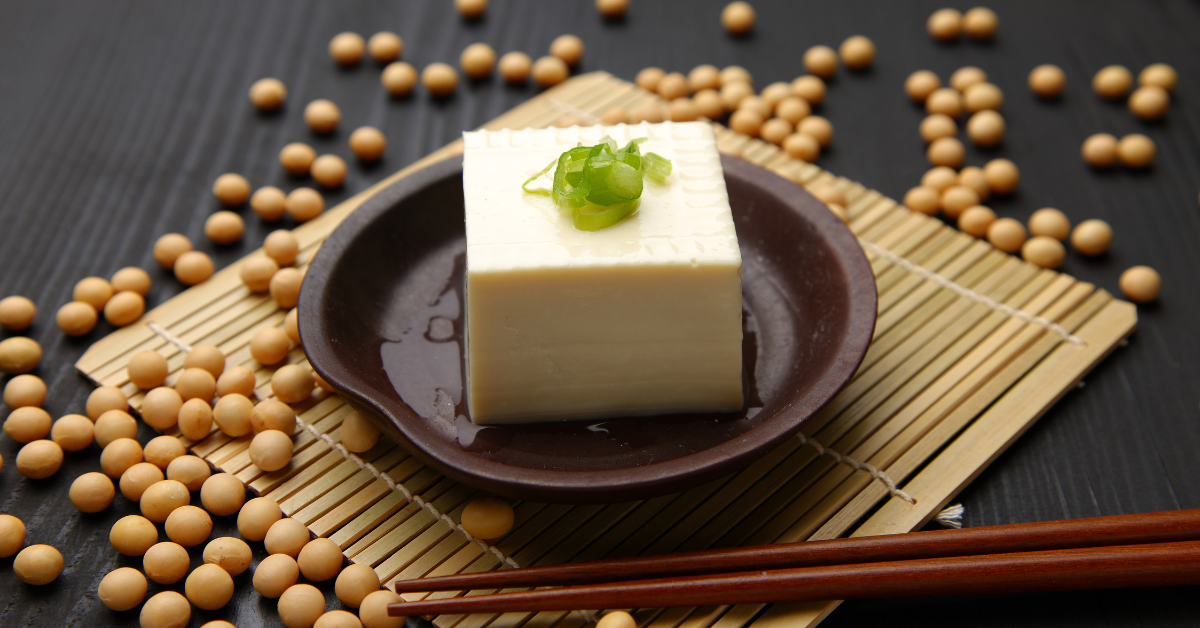Tofu is a traditional ingredient that lies at the heart of Japanese cuisine.
Made simply from soybeans and water, it has nourished people for centuries with its high nutritional value and versatile uses. Today, tofu is being rediscovered worldwide as an icon of healthy and sustainable eating.
The Origins and History of Tofu
Tofu originated in China around two thousand years ago. It was introduced to Japan during the Nara period along with Buddhism and was first used in temple vegetarian cuisine. Later, it appeared on the tables of aristocrats during the Heian period and spread widely among common people in the Edo period. At that time, a cookbook titled “Tofu Hyakuchin” (“One Hundred Tofu Delicacies”) was published, proving tofu’s importance in daily life and culinary culture.
During the Meiji era, technological progress allowed tofu to be produced and distributed more efficiently. By the Showa era, with the spread of refrigeration, tofu became a staple food available throughout Japan.
The Spread of Tofu Through Japanese History
| Era | Main Use | Cultural Background |
|---|---|---|
| Nara–Heian | Monks and nobles’ vegetarian cuisine | Influenced by Buddhist dietary customs |
| Edo | Common people’s food | Rise of tofu shops in cities |
| Meiji–Showa | Household staple | Industrialization and mass production |
| Modern era | Health and beauty food | Growth of vegan and wellness culture |
Types and Characteristics of Tofu
There are several varieties of tofu, each with different textures and uses depending on how it’s made.
| Type | Characteristics | Main Use |
|---|---|---|
| Momen Tofu (Cotton Tofu) | Firm and dense texture with less water | Stews, stir-fries, dengaku (miso-glazed tofu) |
| Kinu Tofu (Silken Tofu) | Smooth and creamy | Cold dishes, soups, desserts |
| Yaki Tofu (Grilled Tofu) | Slightly roasted and aromatic | Sukiyaki, hot pot dishes |
| Koya Tofu (Freeze-dried Tofu) | Dried for long-term storage | Vegetarian stews, temple cuisine |
| Oboro Tofu (Curd-style Tofu) | Soft, rich, and delicate | Fine dining and kaiseki cuisine |
Because of these variations, tofu can take on many roles—from the centerpiece of a meal to a subtle supporting ingredient—demonstrating its versatility in Japanese cuisine.
Tofu in Japanese Food Culture
Tofu holds a central role in Japan’s food culture, embodying harmony with nature and simplicity. It changes with the seasons: eaten cold in summer as hiyayakko, and enjoyed hot in winter as yudofu.
In Buddhist vegetarian cuisine, tofu serves as a vital source of plant-based protein, replacing meat or fish. Its subtle taste allows chefs to showcase their skill by balancing flavors delicately.
Representative Japanese Tofu Dishes
| Dish | Description | Typical Season |
|---|---|---|
| Hiyayakko | Chilled tofu topped with condiments | Summer |
| Yudofu | Tofu simmered in kombu broth | Winter |
| Mabo Tofu | Japanese-style spicy tofu stew | All year |
| Agedashi Tofu | Fried tofu served with savory sauce | Autumn–Winter |
| Tofu Hamburger | Healthy tofu-based patty | All year |
Nutritional Value and Health Benefits of Tofu
Tofu is known for being high in protein and low in calories, making it ideal for those seeking a balanced and healthy diet. It is rich in plant-based nutrients, easily digestible, and suitable for people of all ages.
| Nutrient | Main Benefit | Amount (per 100g) |
|---|---|---|
| Plant Protein | Builds muscles and maintains skin health | About 5g |
| Calcium | Strengthens bones and teeth | About 60mg |
| Isoflavones | Regulates hormones, eases menopause symptoms | About 20mg |
| Vitamin E | Prevents aging with antioxidant effects | About 0.4mg |
| Lecithin | Improves memory and blood circulation | About 3mg |
Regular tofu consumption may help prevent lifestyle-related diseases, support beautiful skin, and strengthen bones. Isoflavones, in particular, are often called a natural estrogen, making tofu especially beneficial for women’s health.
Regional Tofu Traditions Across Japan
Each region in Japan has its own tofu tradition, reflecting its local water quality, climate, and cultural heritage. From Kyoto’s soft “Oboro Tofu” to Okinawa’s firm “Shima Tofu,” tofu has adapted beautifully to each area’s food culture.
| Region | Type | Distinct Feature |
|---|---|---|
| Kyoto | Oboro Tofu | Elegant and refined flavor, used in fine dining |
| Okinawa | Shima Tofu | Firm texture, ideal for stir-frying |
| Nagano | Koya Tofu (Frozen Tofu) | Freeze-dried for long preservation |
| Yamagata | Tama Konjac Tofu | Chewy, used in local dishes |
| Hiroshima | Okara Tofu | Eco-friendly tofu made with byproducts |
These regional variations illustrate Japan’s rich culinary diversity, and many local tofu varieties are now tourist favorites.
Tofu and Environmental Sustainability
Tofu is also recognized as an eco-friendly food. Its main ingredient, soybeans, emits far less carbon dioxide compared to animal farming and helps maintain soil fertility. Moreover, the byproduct of tofu production, okara, is reused in various ways—as food, animal feed, or fertilizer—making tofu part of a circular food system.
Tofu Production and Sustainability
| Aspect | Description |
|---|---|
| Main Ingredient | Increased use of domestic soybeans |
| Production Process | Low-energy and low-emission manufacturing |
| Byproduct Utilization | Okara reused for food, compost, and feed |
| Environmental Impact | Significantly fewer greenhouse gas emissions than meat production |
For these reasons, tofu is being re-evaluated globally as a sustainable food of the future.
Conclusion
Tofu is a timeless symbol of Japanese culinary tradition. Its gentle flavor, high nutritional value, and environmentally conscious production align perfectly with modern values of health and sustainability. Loved for centuries as a “food that nourishes both body and spirit,” tofu has now become a global ambassador of Japanese cuisine.
As it continues to evolve through new recipes and innovations, tofu will remain an essential ingredient that connects Japan’s traditions with the future—a food that sustains health, harmony, and happiness around the world.






